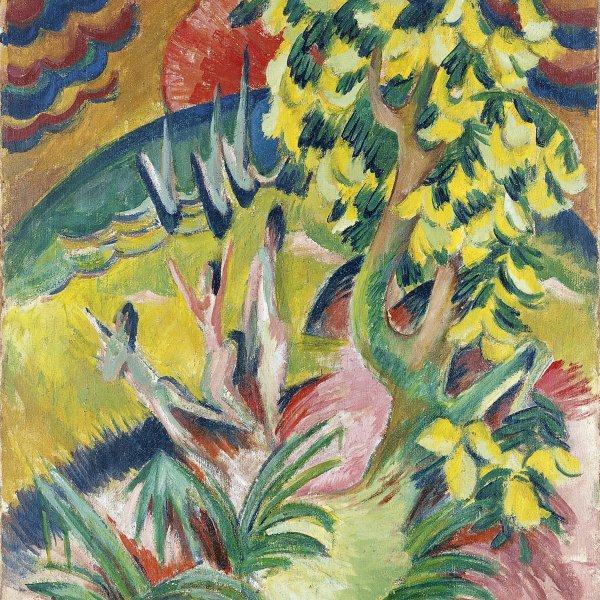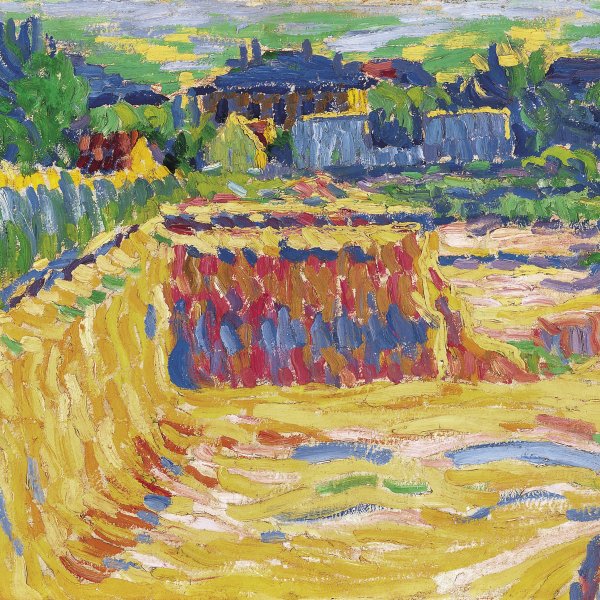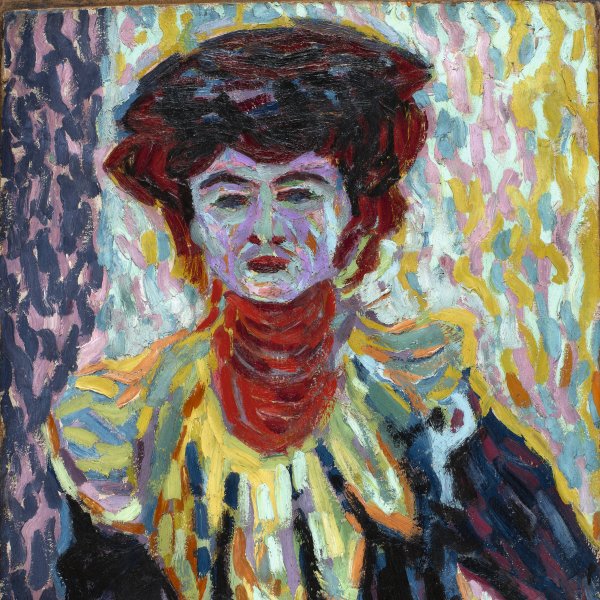Junkerboden under Snow
‘After Hodler, Kirchner was the first painter to paint the mountains in a different way’ wrote critic Louis de Marsalle in 1927. With these words, penned by the artist himself under a pseudonym, Kirchner acknowledged his own role in renewing a long painting tradition that had adopted the monumentality of the Alps as a central theme of the Swiss and German cultural discourses since Romanticism.
The painter, who had visited Davos for the first time in 1917 with the aim of recovering his physical and mental health, decided soon afterwards to settle there permanently. The surrounding mountains and their inhabitants became a source of inspiration for many of his works and took the place of his previous reflections on the great metropolis.
In Junkerboden under Snow, which was in his studio when he died, Kirchner depicted a small area of level ground at the foot of the Rinerhorn that he had painted several times since 1919. The signature in the upper right corner, probably added by his partner Erna Schilling after his death, and the unfinished appearance of the blanket of snow covering the lower half of the canvas have led scholars to believe that it is one of his last paintings.









